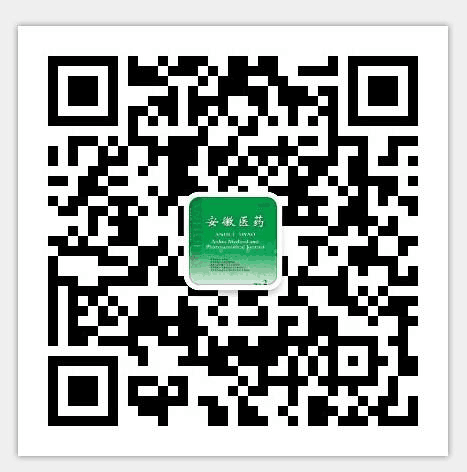| 张艳,郑小燕,刘林,等.耐药结核病人营养不良调查与风险预测模型的建立[J].安徽医药,2025,29(10):2027-2031. |
| 耐药结核病人营养不良调查与风险预测模型的建立 |
| Nutritional risk survey of drug-resistant tuberculosis patients and its predictive modelling |
| |
| DOI:10.3969/j.issn.1009-6469.2025.10.023 |
| 中文关键词: 耐药结核病 营养不良 LASSO回归 多因素分析 列线图模型 |
| 英文关键词: Drug resistant tuberculosis Malnutrition Least absolute shrinkage and selection operator regression(LASSO regres-sion) Multifactorial analysis Nomogram modelling |
| 基金项目:重庆市万州区科卫联合医学科研项目( WZSTC-KW2020028) |
|
| 摘要点击次数: 177 |
| 全文下载次数: 170 |
| 中文摘要: |
| 目的调查耐药结核病人营养风险,并建立起预测模型。方法选择 2022年 1月至 2024年 1月重庆大学附属三峡医院接诊的 421例耐药结核病人进行研究。入组者以 7∶3比例分为模型组 295例,验证组 126例。收集可能影响耐药结核病人营养不良的相关因素,根据有无营养不良将病人分为两组,比较两组基本情况、疾病相关指标及实验室指标,以 LASSO回归筛选出潜在影响因素后行多因素 logisitic回归,根据多因素分析结果建立列线图模型并进行内部与外部验证。结果模型组 295例耐药结核病人中有 73例( 24.75%)出现营养不良,营养不良组与非营养不良组病人年龄[(56.18±12.83)岁比(50.59±11.35)岁]、吸烟史、饮酒史、居住地、 BMI[(20.63±2.32)kg/m2比( 21.99±1.74)kg/m2]、糖尿病史、合并重症肺炎、合并其他肺部慢性疾病、病变累计占肺野数、空洞、合并肺外结核[24.66%(18/73)比 9.46%(21/222)]、广泛耐药状况[32.88%(24/73)比 14.41%(32/222)]、贫血[30.13%(22/73)比 13.96%(31/222)]、血尿素氮[( 8.43±3.05)mmol/L比( 6.58±2.47)mmol/L],均差异有统计学意义( P< 0.05)。LASSO回归基础上行多因素 logistic回归分析结果显示:年龄、身体质量指数(BMI)合并肺外结核、耐药状况、贫血、血尿素氮与耐药结核病人营养不良相关(P<0.05)。模型区分度行受试者操作特征曲线(ROC曲线)、分析结果显示:模型组预测耐药结核病人营养不良风险的曲线下面积(AUC)及其 95%CI为 0.81(0.75,0.86)灵敏度为 80.6%,特异度为 65.8%;验证组的 AUC及其 95%CI为 0.78(0.72,0.85)灵敏度为 80.2%,特异度为 68.5%。模型准确度行,校准曲线结果显示,模型组与验证组的预测曲线与 |
| 英文摘要: |
| Objective To investigate the nutritional risk of drug-resistant tuberculosis patients and to develop a predictive model. Methods A total of 421 patients with drug-resistant tuberculosis seen in Three Gorges Hospital Affiliated to Chongqing Universityfrom January 2022 to January 2024 were selected for the study. The enrolled patients were assigned a model group (n=295) and a vali-dation group (n=126) in the ratio of 7∶3. Relevant factors that may affect malnutrition in patients with drug-resistant tuberculosis were collected, and the patients were divided into 2 groups according to the presence or absence of malnutrition, comparing the basic condi-tions, disease-related indexes and laboratory indexes between the 2 groups. Multivariate Logisitic regression was performed after screen-ing out the potentially impact factors by LASSO regression, and a nomogram model was established according to the results of the multi-variate analysis, and was verified both internally and externally.Results In the model group, 73 (24.75%) of 295 drug-resistant tuber-culosis patients were malnourished. There were statistically significant differences in age [(56.18±12.83) years vs. (50.59±11.35) years], smoking history, alcohol consumption history, residence, BMI [(20.63±2.32) kg/m2 vs. (21.99±1.74) kg/m2], history of diabetes, comor-bid severe pneumonia, comorbid other chronic lung diseases, cumulative number of lesions occupying lung fields, cavities, comorbid ex-trapulmonary tuberculosis [24.66% (18/73) vs. 9.46% (21/222)], extensively drug-resistant status [32.88% (24/73) vs. 14.41% (32/222)], anemia [30.13% (22/73) vs. 13.96% (31/222)], and serum urea nitrogen [(8.43±3.05) mmol/L vs. (6.58±2.47) mmol/L] between the mal-nourished and non-malnourished patient groups (P<0.05). The results of multivariate logistic regression analysis performed on the basisof LASSO regression showed that age, BMI, combined extrapulmonary TB, drug resistance status, anemia and serum urea nitrogen wereassociated with malnutrition in drug-resistant TB patients (P <0.05). Receiver operating characteristic curve (ROC curve) analysis ofmodel differentiation showed that the area under the curve (AUC) for predicting the risk of malnutrition in drug-resistant TB patients in the model group was 0.81 [95%CI (0.75, 0.86)], with a sensitivity of 80.6% and a specificity of 65.8%, while that in the validation group was 0.78 [95%CI (0.72,0.85)], with a sensitivity of 80.2% and a specificity of 68.5%. The results of the model accuracy line calibrationcurve showed that the prediction curves of the model group and the validation group were basically fitted to the standard curve. The re-sults of H-L goodness-of-fit test showed a good model fit (P>0.05). Decision curve analysis results showed that the net benefit to pa-tients was greater than 0 when the nomogram predicted a probability threshold of 0.10-0.85 for the risk of malnutrition in patients with drug-resistant tuberculosis.Conclusion Malnutrition in drug-resistant tuberculosis patients is mainly affected by age, BMI, and co-morbid extrapulmonary tuberculosis, and the nomogram model developed in this study for predicting the risk of malnutrition in drug-re-sistant tuberculosis patients has high accuracy and discrimination. |
|
查看全文
查看/发表评论 下载PDF阅读器 |
| 关闭 |
|
|
|


